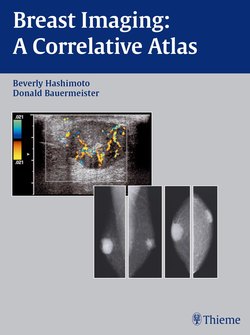Читать книгу Breast Imaging - Beverly Hashimoto - Страница 5
На сайте Литреса книга снята с продажи.
ОглавлениеForeword
In the modern world of medical pedagogy, the practitioner must become a perpetual student. Through seminars, journals, meetings, day-to-day conversations with colleagues, and the wonderful new world of the Internet, today's radiologist is constantly challenged by an ever-expanding world of knowledge. The immense volume of complex information does not alter the need to quickly apply this information in daily casework. The textbook remains an integral part of this knowledge base. However, modern textbooks no longer can be simple repositories of information. Such texts are impractical considering the pace of modern medicine and the seemingly ever-increasing caseload. Current reality mandates that textbooks serve as a practical “desk reference,” a tool that helps to rapidly answer questions as they arise in one's daily casework. This textbook, Correlative Atlas of Breast Imaging, meets this need brilliantly. It is timely, clearly written, excellently illustrated, and has the simplicity and brevity necessary to serve as a useful desk reference.
This textbook is well organized for the practicing radiologist who usually employs mammography primarily, and then uses sonography or other modalities to answer questions either raised or not addressed by the mammogram. Dr. Hashimoto organizes her textbook by mammographic findings and then effectively illustrates the pathologic entity. Each chapter carries the clinician radiologist through an analysis according to the specific mammographic abnormality.
This text documents the integral importance of sonography in breast imaging. Breast imaging now requires a multidisciplinary approach. The use of all modalities, as discussed in the text, must be brought to bear on the clinical problems encountered in the individual case. Increasing importance is being placed on the proposition that breast imagers not only attempt to find as many breast cancers as technically possible, but to find them without subjecting ten women to needless breast biopsies for every cancer detected. The surest means to this end is the appropriate application of alternative technologies to film mammography.
I first met Dr. Beverly Hashimoto as a resident in Radiology at the University of California, San Francisco. I was very pleased when she accepted a fellowship in diagnostic sonography under my direction. She showed herself to be a student of extraordinary talent and to have an admirable dedication of purpose. I believed she was well suited to a typical academic post at a university. Instead she opted to join the prestigious Virginia Mason Clinic. Beverly helped to teach me that an inquisitive mind could flourish anywhere. Many university academicians would envy her academic pursuits, publications, and national prominence. The responsibility to advance radiological imaging lies not only in academia but in private practices as well. I am most proud of my students who have achieved significant academic success in a non-university setting.
Although magnetic resonance imaging is likely to have an increasing impact on solving breast imaging problems as time goes on, currently sonography has the greatest ancillary benefit to film mammography. Breast sonography has a somewhat checkered past. In the earlyto mid-1980s, there was a strong push by several equipment developers to produce an automated, whole-breast, sonographic imaging device. Shortly after achieving success, claims of great ability in the detection of breast cancer began to appear. However, the data ultimately indicated the automated, whole-breast, sonographic imaging was not on a par with radiographic mammography. The experience left a bad taste in the mouths of many sonologists and mammographers. This episode undoubtedly retarded the growth and acceptance of sonographic breast imaging. However, to their credit, a small cadre of dedicated researchers took up the task of developing sonography in breast imaging for more than deciding whether a mass was cystic or not. Dr. Hashimoto figures prominently in this group of dedicated researchers. This book is the culmination of her years of excellent work in this medical arena.
Roy A. Filly, MD
Professor of Radiology, of Surgery, and of Obstetrics,
Gynecology and Reproductive Sciences
Chief, Section of Diagnostic Sonography
University of California, San Francisco
